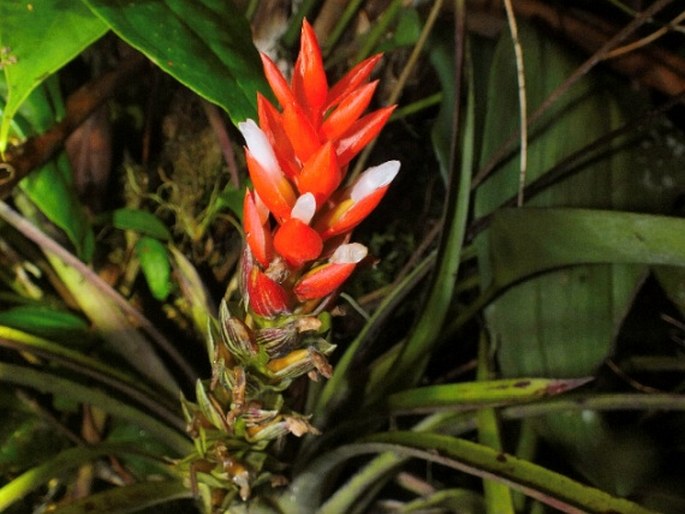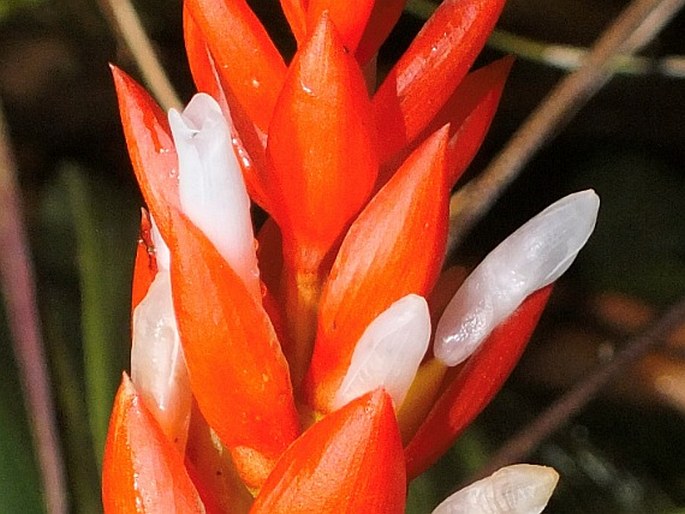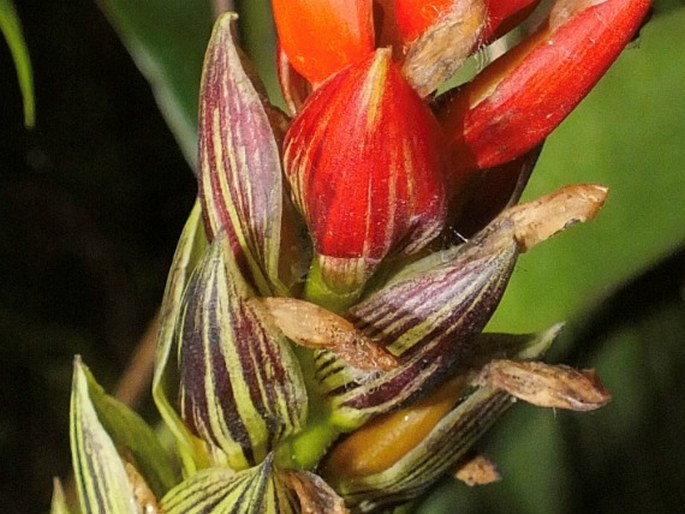Syn.: Guzmania clavata (Lam.) Urb., Guzmania monostachia var. alba Ariza-Julia, Guzmania monostachia var. variegata Nash, Guzmania platysepala Mez et C. F. Baker, Guzmania tricolor Ruiz et Pav., Renealmia monostachia L., Tillandsia clavata D. Dietr., Tillandsia gymnophylla Baker, Tillandsia monostachia (L.) L.
Family: Bromeliaceae Juss.

Distribution: Neotropical species occurring widely from south Florida and Honduras, through Caribbean islands, Venezuela, Colombia and Ecuador, reaching north Peru and northeastern Brazil (Mata Atlântica) with a record in Bolivia.
Ecology: Epiphytic plant growing in tropical both evergreen and semi-deciduous forests, also in montane rain forests, up to elevation of over 1850 m.
Description: Monocarpic plant like most bromeliads (single blooming and death while producing offsets), rosette of leaves containing water, with no stem, up to 20–45 cm tall when in flower. Leaves are linear, grass-like, 25–45 cm long, 1.5–2 cm wide, margins smooth, pale green, in bright light reddish. Peduncle 13–23 cm long ending in the inflorescence 9–17 cm long, many-flowered spike; ovoid bracts are 3–5 cm long, in two colours, lower ones greenish with reddish lines, upper ones red only; flowers are erect, sessile, sepals 18 mm long, petals 20–30 mm long, fused almost the full length, colour white. Fruit is a capsule up to 30 mm long.



These images were taken in Ecuador, prov. Pichincha, Mindo (April 8, 2019).


